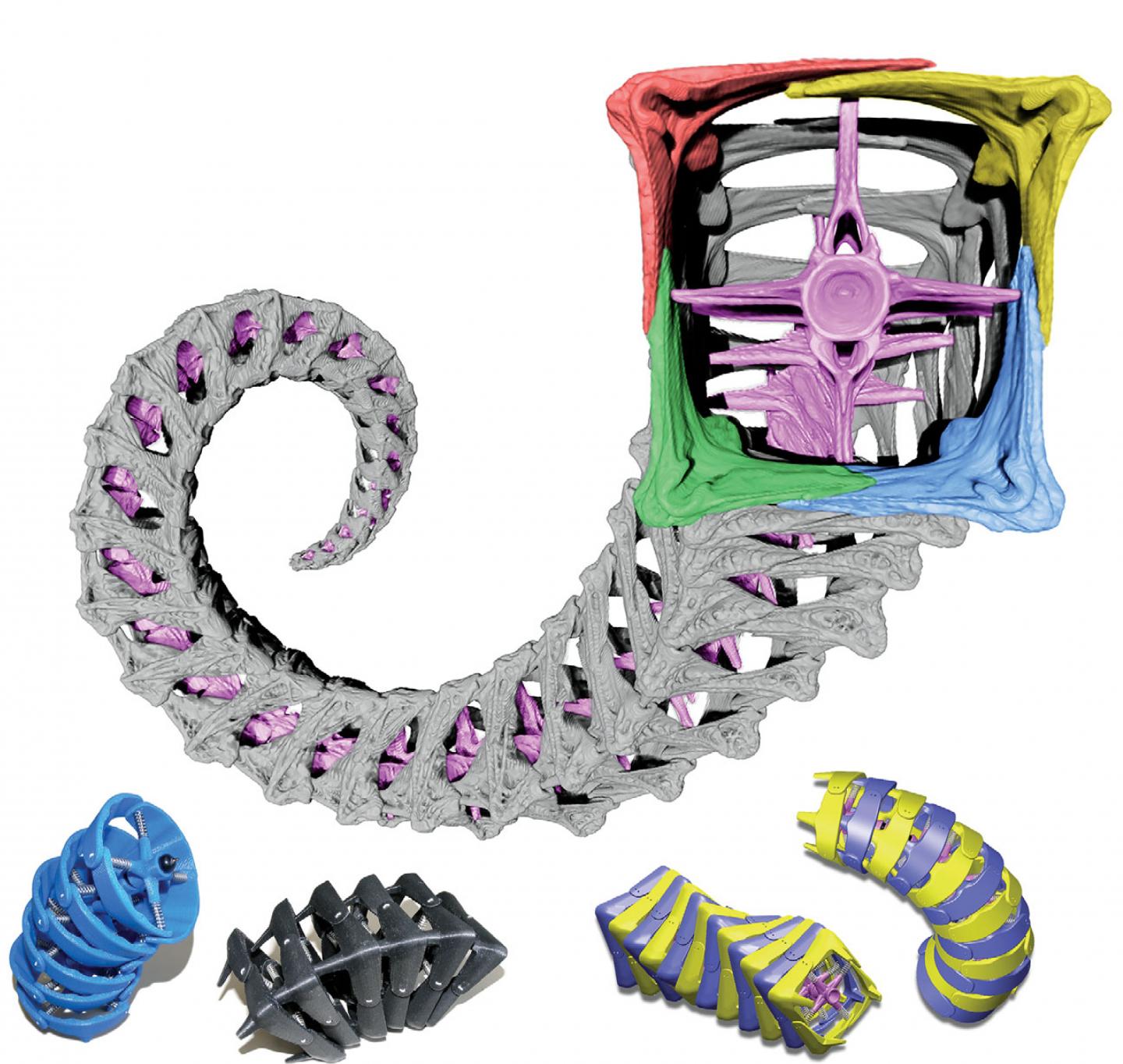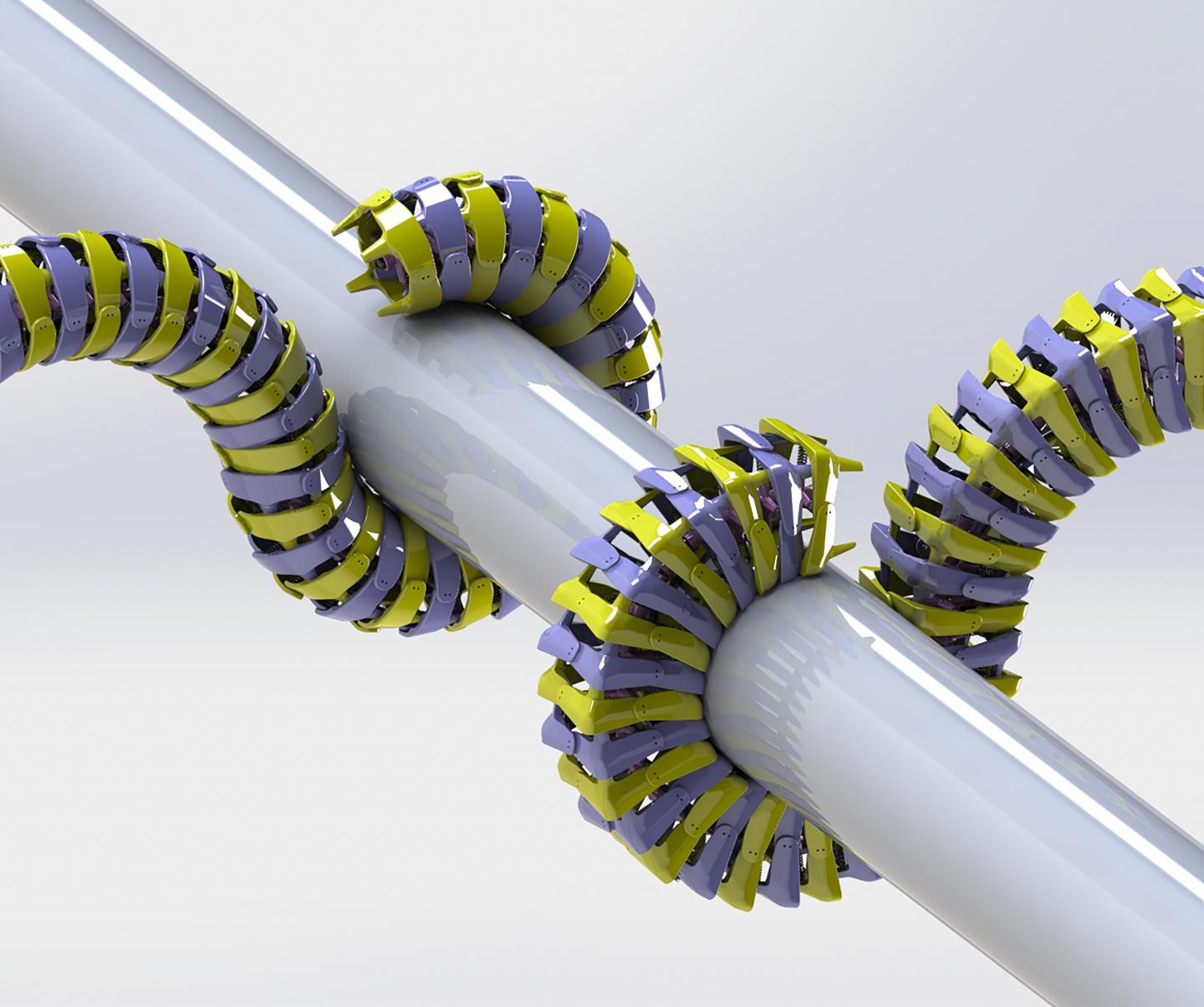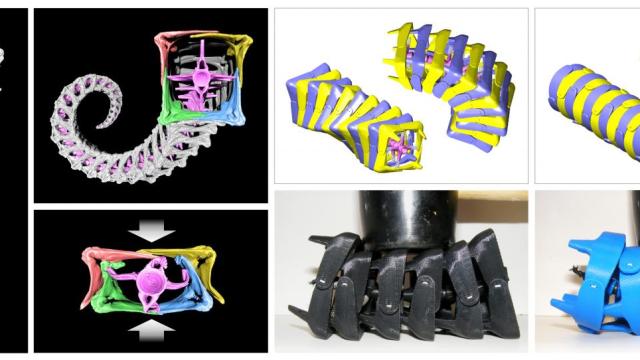It’s hip to be square if you’re a seahorse — or rather, it has certain adaptive advantages. Cylindrical tails may be much more popular in the animal kingdom, but the seahorse’s bizarre square-prism tail has far better mechanical properties.
“Almost all animal tails have circular or oval cross-sections — but not the seahorse’s. We wondered why,” said Clemson University mechanical engineer Michael Porter. “We found that the squared-shaped tails are better when both grasping and armour are needed.”
Porter’s insights on the virtues of a square tail, published tomorrow in Science, could help engineers design robots that can grip, grab, twist and endure mechanical stress much better than their modern counterparts.
From monkeys and rodents to salamanders, snakes and lizards, the cylindrical tail has made its mark across the tree of life. But the seahorse, a fish that kinda sucks at swimming, has always been a bit of a misfit. The seahorse’s tail is composed of 36-odd square plates, which attach to the animal’s vertebrate via thick layers of connective tissue, decreasing in size along the length of the tail. It looks something like this:

Image via Oregon State University
Porter, whose research group is in the business of designing new structures based on biological templates, has for years been fascinated by the seahorse tail’s unique geometry. While studying seahorse skeletons as a PhD student, he discovered the bones are composed of only 40 per cent mineral, plus a surprisingly large amount of protein and other organic compounds. When subjected to load tests, he learned that the connective tissue between the bony plates and tail muscles took on most of the pressure, leaving the vertebrae unharmed.
To learn more about the physics behind the tail’s fantastic mechanical properties, Porter’s team 3D-printed skeletal models of a seahorse tail, similar to those shown above. They also printed tails composed of overlapping round segments, as well as cylindrical and prismatic tails with no segments at all. Each of these models was subjected to a battery of tests designed to evaluate its strength and flexibility.
One of the main things seahorses use their tails for is gripping seagrasses or corals. Tails used for anchoring need able to pivot and bend easily without overextending themselves. Twisting their different model tails, the researchers learned that the square-plated tail returned to its original shape faster than the circle-plated tail, and expended less energy doing so. Square plates, they discovered, also interfere with each other when twisting, limiting the tail’s overall range of motion by half compared with round plates. This feature could help protect the seahorse’s spinal cord from mechanical damage. Square tails are also just plain grippier, making more points of contacts with a surface.

A square plated-tail (front) grips surfaces better than a round-plated tail (back). Image via Michael Porter/Clemson University.
A tail that can withstand stress is less likely to get crushed by a predatory bird’s beak. Turns out, the square-plated tail also receives top marks in terms of strength. Its joints are positioned at the exact locations that fail when crushed, allowing the bony plates to slide past one another, absorb more energy on impact, and snap back to their original positions after the stress is relieved. Overall, square tails proved to be more resistant to deformation than round ones, whose shapes were easily warped under pressure.
Porter’s team is hopeful that these insights could help us build new and better machines. “Human engineers tend to build things that are stiff so they can be controlled easily,” said Ross Hatton of Oregon State University, a co-author on the study. “But nature makes things just strong enough not to break, and then flexible enough to do a wide range of tasks. That’s why we can learn a lot from animals that will inspire the next generations of robotics.”
Applications might include robotic devices for surgery, industry, search and rescue, or really anything that calls for a flexible and resilient touch. The sky’s the limit in terms of what we can imagine, but personally, I’m holding out for an autonomous rock climbing arm that a human can use in a pinch.
Follow Maddie on Twitter or contact her at maddie.stone@gizmodo.com
Pictures: Seahorse skeletons are composed of highly-articulated bony plates that surround a central vertebral column; Bending and twisting performance of the prototypes. Via Michael Porter/Clemson University/UC San Diego.
